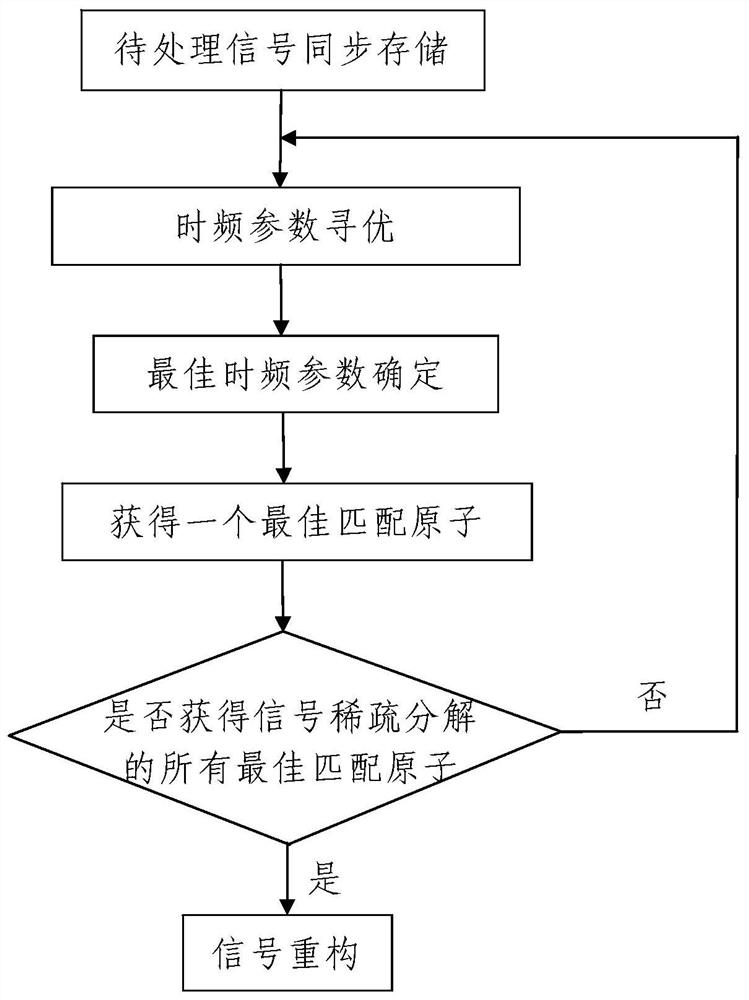A Signal Denoising Method Based on Time-Frequency Analysis
A time-frequency analysis and signal technology, applied in the field of signal denoising, can solve the problems of limited detection accuracy of weak and small defects, large amount of calculation of sparse decomposition algorithm, and inability to perform real-time detection, etc. Use good effect
- Summary
- Abstract
- Description
- Claims
- Application Information
AI Technical Summary
Problems solved by technology
Method used
Image
Examples
Embodiment Construction
[0094] Such as figure 1 A signal denoising method based on time-frequency analysis is shown, comprising the following steps:
[0095] Step 1, synchronously storing the signal to be processed: using the data processing device 2 to store the signal f(t) to be processed synchronously; the signal f(t) to be processed is the signal collected by the signal sampling system 1;
[0096] Among them, f(t)=[f(t 1 ), f(t 2 ),...,f(t N )] T , t represents the time parameter, t i is the i-th sampling moment of the signal sampling system 1, f(t i ) is the signal value of the ith sampling moment in the signal to be processed f (t), i is a positive integer and i=1, 2, 3, ..., N, and N is the signal length of the signal f (t) to be processed;
[0097] Step 2, signal denoising: use data processing equipment 2 to denoise the signal f(t) to be processed described in step 1, the process is as follows:
[0098] Step 201, signal sparse decomposition based on an optimization algorithm: use the d...
PUM
 Login to View More
Login to View More Abstract
Description
Claims
Application Information
 Login to View More
Login to View More - R&D
- Intellectual Property
- Life Sciences
- Materials
- Tech Scout
- Unparalleled Data Quality
- Higher Quality Content
- 60% Fewer Hallucinations
Browse by: Latest US Patents, China's latest patents, Technical Efficacy Thesaurus, Application Domain, Technology Topic, Popular Technical Reports.
© 2025 PatSnap. All rights reserved.Legal|Privacy policy|Modern Slavery Act Transparency Statement|Sitemap|About US| Contact US: help@patsnap.com


